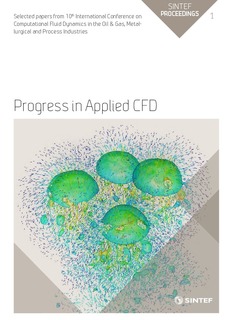| dc.contributor.author | Jensen, Atle | |
| dc.contributor.author | Grafsrønningen, Stig | |
| dc.date.accessioned | 2017-11-08T08:38:44Z | |
| dc.date.available | 2017-11-08T08:38:44Z | |
| dc.date.issued | 2015 | |
| dc.identifier.isbn | 978-82-536-1433-5 | |
| dc.identifier.isbn | 978-82-536-1432-8 | |
| dc.identifier.issn | 2387-4295 | |
| dc.identifier.uri | http://hdl.handle.net/11250/2464804 | |
| dc.description.abstract | Experiments and numerical conjugate heat transfer simulations are performed on a simple T-pipe geometry. The T-pipe geometry is partially insulated and mimics subsea equipment which is subject to cool-down after a production shut-down. During flowing conditions the flow is turbulent before closing down and cool-down starts. After some time after shut-down the flow becomes near stagnant in parts of the geometry whereas it remains turbulent in the vertical section for a long time after shut-down due to large buoyant forces. Velocities were measured with particle image velocimetry (PIV), whereas temperature was measured using resistance temperature detectors (RTD's) and thermocouples. A particular focus is on the effect of using Reynolds-averaged Navier–Stokes (RANS) turbulence models on a buoyant flow which is laminar, transitional and turbulent within a single fluid domain. | nb_NO |
| dc.language.iso | eng | nb_NO |
| dc.publisher | SINTEF Academic Press | nb_NO |
| dc.relation.ispartof | Selected papers from 10th International Conference on Computational Fluid Dynamics in the Oil & Gas, Metallurgical and Process Industries | |
| dc.relation.ispartofseries | SINTEF Proceedings;1 | |
| dc.subject | CFD | nb_NO |
| dc.subject | Turbulence | nb_NO |
| dc.subject | Natural convenction | nb_NO |
| dc.subject | PIV | nb_NO |
| dc.title | Cool down simulations of subsea equipment | nb_NO |
| dc.type | Chapter | nb_NO |
| dc.description.version | publishedVersion | nb_NO |
| dc.rights.holder | © 2015 SINTEF Academic Press | nb_NO |
| dc.subject.nsi | VDP::Technology: 500 | nb_NO |
